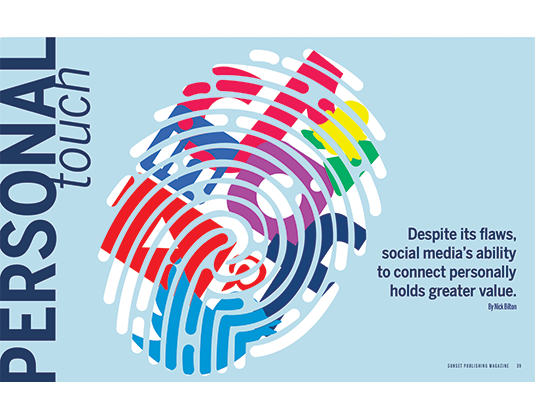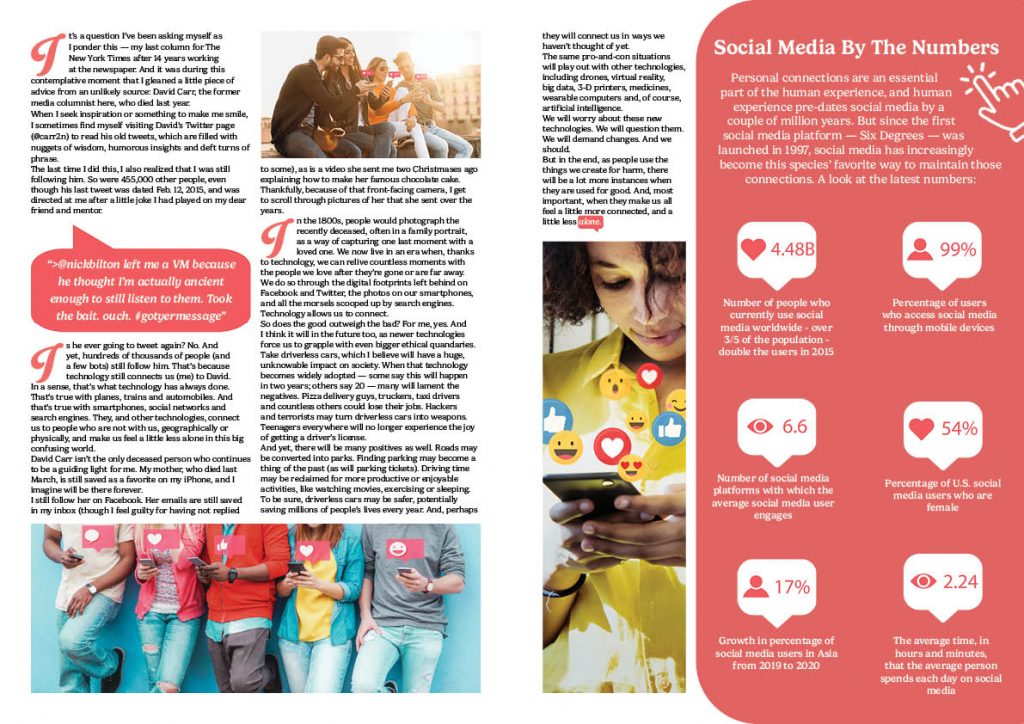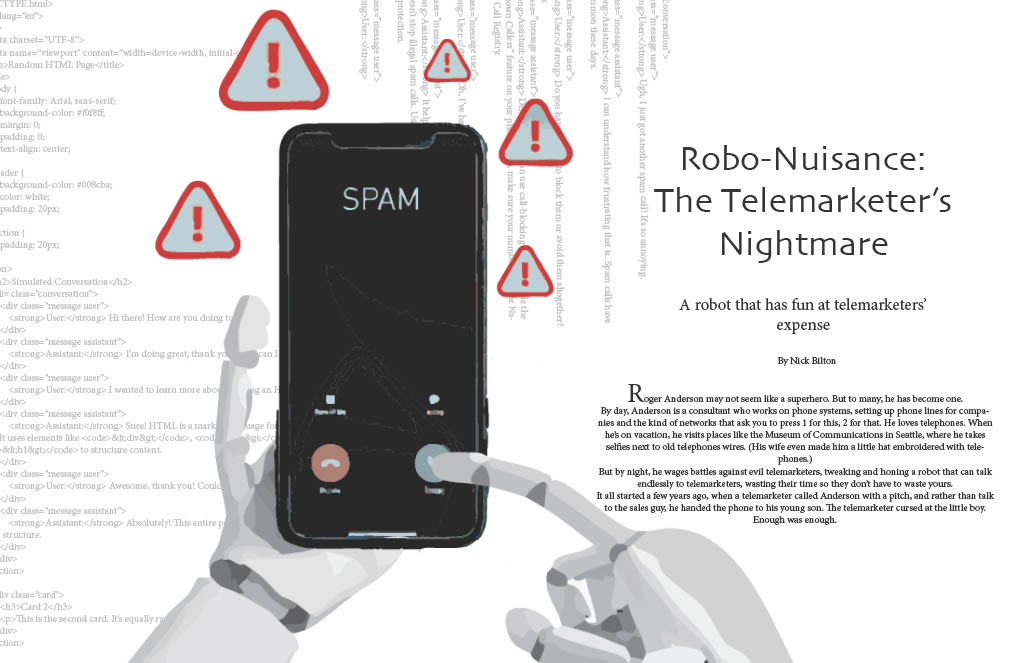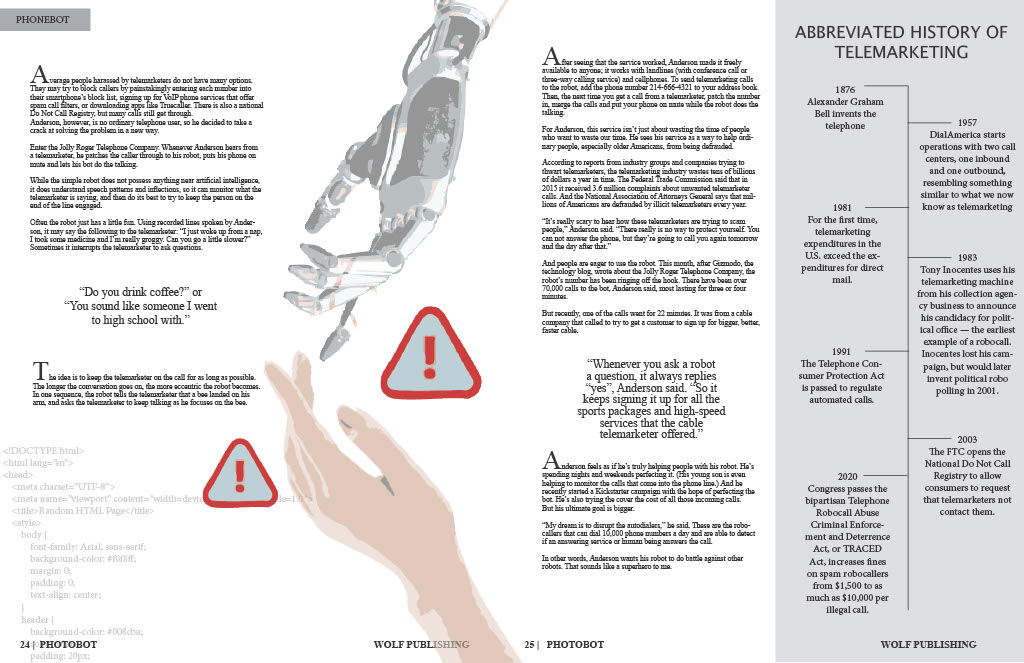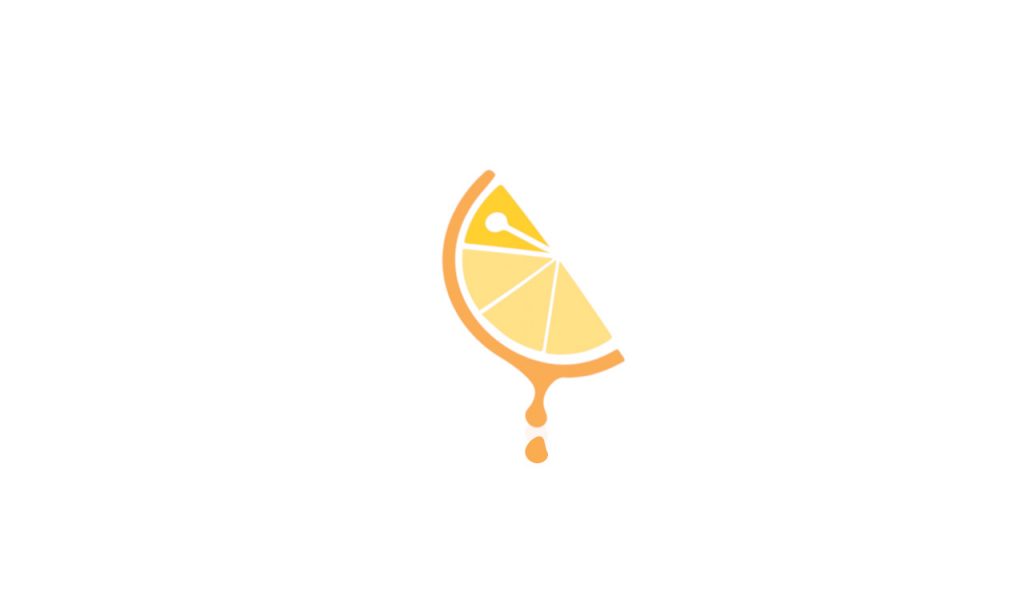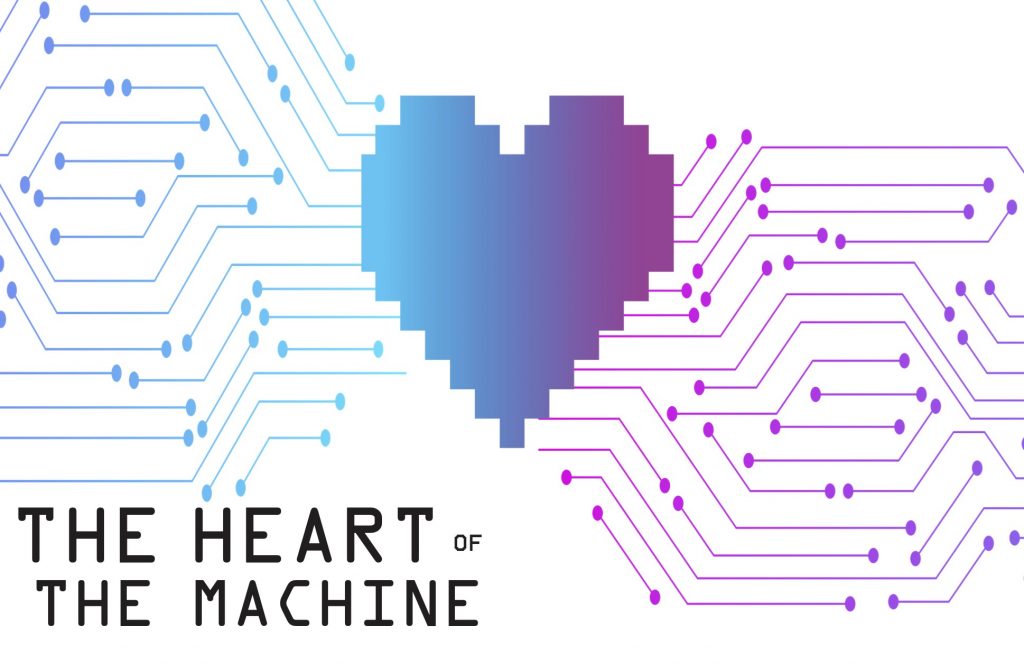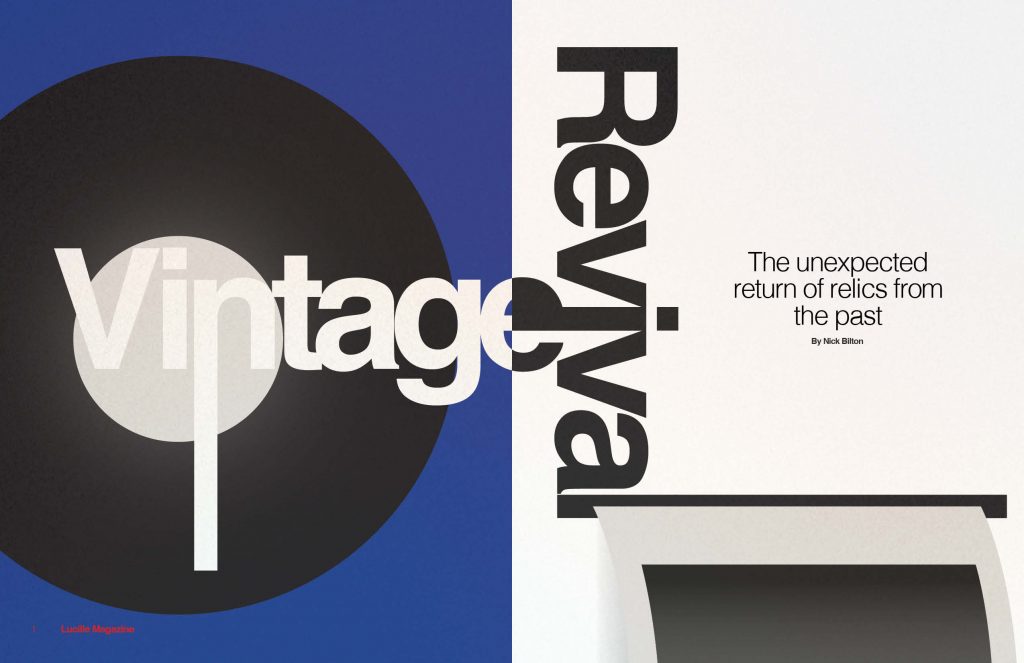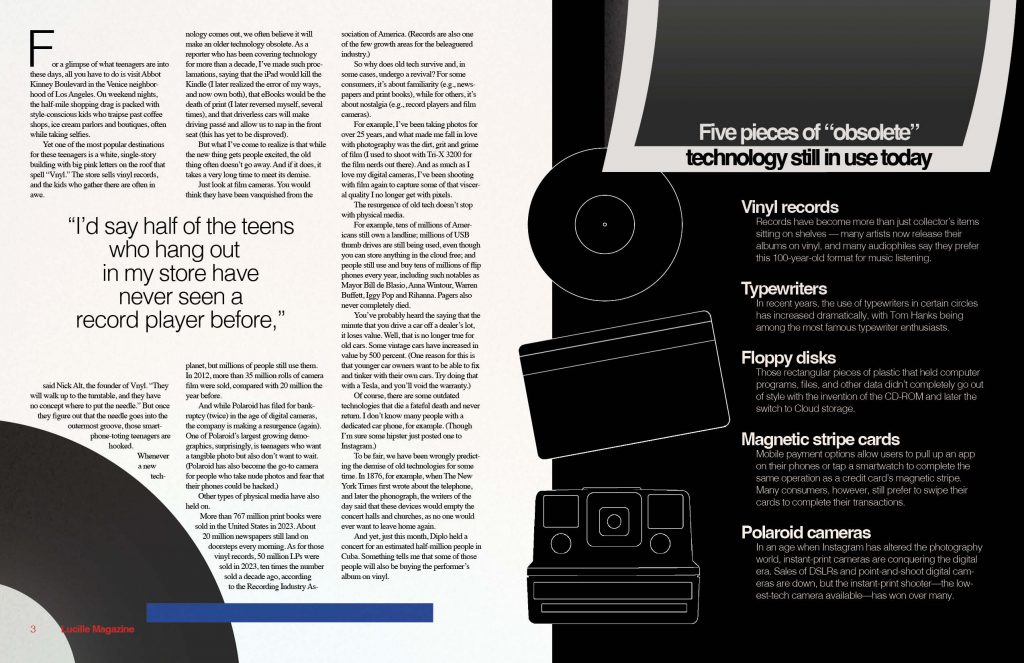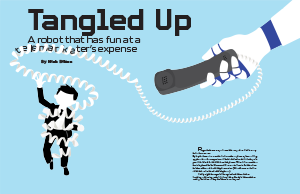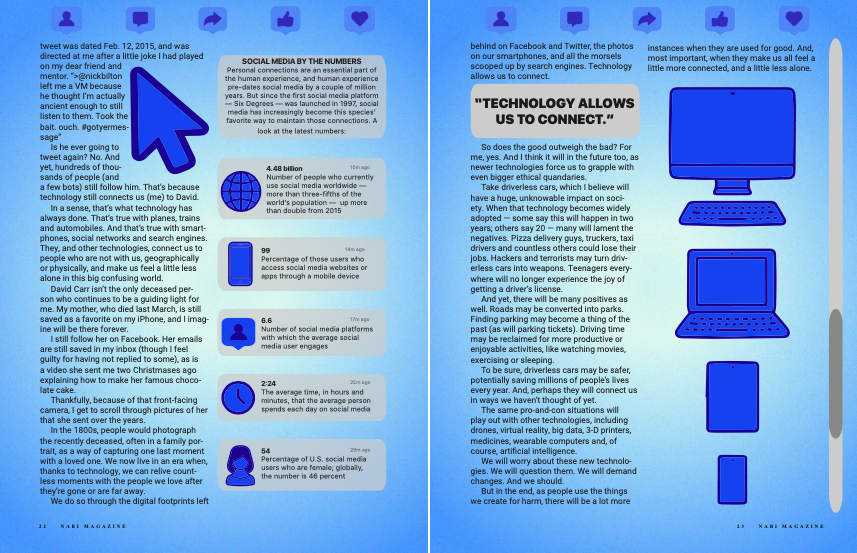For this project, I chose to illustrate the “Old Tech” story. The article explained how technology is always advancing, and yet some older pieces stick around long after they’ve become obsolete.
The most difficult part of this process was deciding how to represent the technology best. The concept of revival or resurgence was challenging to design without feeling too cliche or overly illustrated. After lots of trial and error, I landed on the idea regrowth, shown through plant imagery. This seemed like a simple but effective way to illustrate old objects finding new life. I also decided to focus the deck on Generation Z as I felt it was the most important part of the article. Yes, these pieces of tech have stuck around with the generations that used to use them, but it’s the new generation who are causing the resurgence, thus making them most important to the story.
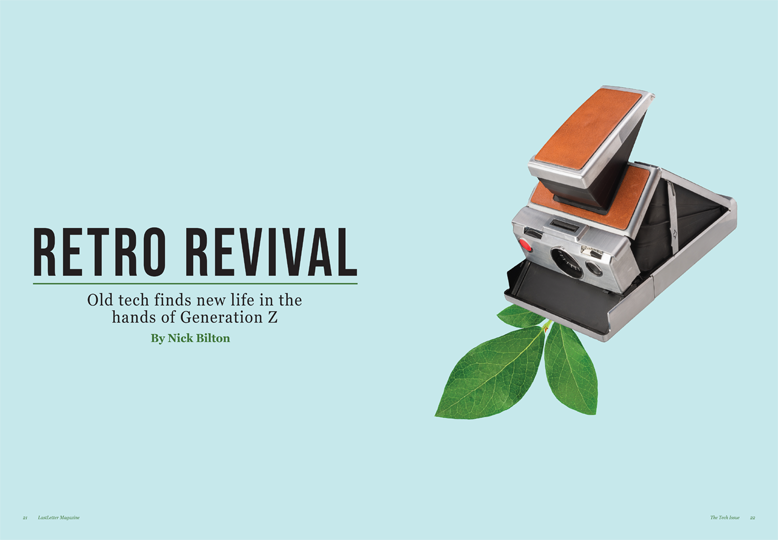
When working on this spread, I was so grateful for the large amount of good quality photographs of the technology. This lead me to focus on photos as opposed to full illustrations for my concept. I wanted to highlight the technology existing in a modern space, and high quality photographs felt like the best way to do so.
Once I had all the images together, I had to tackle fitting them together with the story. The story was shorter than I had expected, leaving me with more room for the side bar and quotes. After lots of rearranging, I found a balance between the sidebar information and the copy that felt even.
The minimal style of this spread felt like the best way to keep the technology as the focus. There was an iteration of this project that had leaves crawling all around and through the story and sidebar, but in the end it was too busy, and I felt that it took away from the intricacies of the old technology.

The color scheme lent itself to the spread easily. Although the light blue and green may not seem like an obvious choice for a technology spread, it worked perfectly with idea of regrowth and resurgence, and was easy to weave through both spreads.
Overall, I truly enjoyed this project. I have spent time working with layouts in past magazine and yearbook work and I was excited to work with it again. A lot of the design work I do now is purely social media based, so it was refreshing to get so much space to work with.

